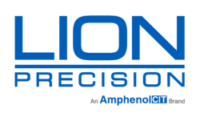General Sensor Application Note LA05-0024
Copyright © 2014 Lion Precision. www.lionprecision.com
Summary:
“Deflection” describes the change in position of one area of an object, usually as the result of a load or other change in conditions. If the object as a whole moves, it is usually referred to as a position measurement.
The precision required and environment in which the measurement is made will determine whether capacitive sensors or eddy-current sensors are the best choice for the application.
Deflection as an Indicator
Deflection is often measured as a result of some change in conditions. That change in conditions creates a force that acts upon an object causing it to distort or deflect. Capacitive and eddy-current displacement sensors can measure that deflection with great precision. Some experimentation with known conditions can quantify the relationship between the condition variable and deflection of the object. This allows indirect measurement of the condition variable using the noncontact displacement sensors.
For precise measurement of the deflection of the object, see our Linear Position Measurement Application Note.
Pressure sensors use this technique. A typical pressure sensor uses a metal diaphragm which is deflected as pressure changes. A sensor, often a capacitive sensor, measures the deflection. The sensor is then calibrated for specific output values at specific pressures.
Weight/Mass is measured the same way in a scale. The weight deflects an object of known stiffness and a sensor measures the deflection. The system is calibrated to translate the deflection into units of weight or mass.
